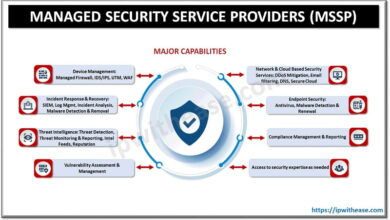
Americans Cellular Networks Under Nefarious Surveillance
Americans cellular networks are under surveillance of nefarious actors – Americans’ cellular networks are under surveillance of nefarious actors. It’s a chilling thought, isn’t it? We rely on our phones for everything – communication, banking, even controlling our homes – and the idea that unseen eyes might be watching our every digital move is unsettling. This isn’t some far-fetched conspiracy theory; the vulnerabilities are real, the methods sophisticated, and the potential consequences devastating.
Let’s delve into the shadowy world of cellular network surveillance and explore what we can do to protect ourselves.
This post will explore the various ways nefarious actors – from foreign governments to organized crime – can exploit weaknesses in our network infrastructure to gain access to our personal data. We’ll examine the types of data at risk, the potential consequences of a successful breach, and what steps individuals and organizations can take to mitigate this threat. We’ll also look at the current legal landscape and how it might need to evolve to keep pace with ever-advancing surveillance techniques.
The Nature of the Threat

The surveillance of American cellular networks by nefarious actors represents a significant threat to national security, individual privacy, and economic stability. Understanding the motivations, methods, and consequences of such surveillance is crucial for developing effective countermeasures. The potential impact extends far beyond simple eavesdropping, encompassing a wide range of malicious activities.The motivations behind targeting American cellular networks are multifaceted.
State-sponsored actors may seek to gather intelligence on government officials, military personnel, or critical infrastructure. Criminal organizations might exploit vulnerabilities to steal personal data, financial information, or intellectual property. Hacktivist groups could target networks to disrupt services or make political statements. Competitor companies might attempt to gain an unfair advantage by stealing trade secrets or disrupting their rivals’ operations.
Each of these groups employs different tactics and has different objectives, but the underlying goal remains to gain unauthorized access and control.
Methods of Surveillance
Nefarious actors employ a variety of sophisticated methods to surveil American cellular networks. These range from relatively simple techniques, like using readily available software to intercept unencrypted communications, to more complex attacks involving exploiting vulnerabilities in network infrastructure or employing specialized hardware. For example, Stingrays, IMSI-catchers, and other cell site simulators can mimic legitimate cell towers, tricking devices into connecting and revealing their location and communications data.
Man-in-the-middle attacks allow attackers to intercept and manipulate data exchanged between devices and cellular towers. Advanced persistent threats (APTs) can compromise network equipment and establish long-term access for data exfiltration. The sophistication of these methods varies greatly, depending on the resources and technical expertise available to the attackers.
Consequences of Successful Surveillance
The consequences of successful surveillance on American cellular networks are severe and far-reaching. Data breaches can lead to identity theft, financial losses, and reputational damage for individuals and organizations. Compromised communications can expose sensitive information, such as trade secrets, military plans, or personal conversations. Disruption of services can cripple essential infrastructure, impacting emergency response, financial markets, and daily life.
The erosion of trust in cellular networks can have broader societal consequences, impacting public confidence in technology and institutions. Furthermore, the ability to track the location and movements of individuals raises significant privacy concerns. The long-term impact of such breaches can be devastating and difficult to fully quantify.
Comparison of Surveillance Techniques
The effectiveness and detectability of various surveillance techniques vary significantly. The following table provides a comparison of some common methods:
| Technique | Target | Effectiveness | Detection Difficulty |
|---|---|---|---|
| IMSI-catcher | Location, communication data | High (in controlled environments) | Moderate to High (depending on sophistication) |
| Man-in-the-middle attack | Communication content | High (if successful) | High (requires advanced detection systems) |
| Malware on mobile devices | Various data, including location, communication, and personal information | High (if undetected) | Moderate (depends on malware sophistication and anti-malware software) |
| Social engineering | Access credentials, personal information | Variable (depends on the success of the social engineering tactic) | Low (often goes undetected until after the compromise) |
Vulnerabilities in Cellular Networks
American cellular networks, while crucial for communication and data transfer, are not immune to vulnerabilities that can be exploited for surveillance. These weaknesses exist at various layers, from the physical infrastructure to the software and protocols governing network operations. Understanding these vulnerabilities is crucial to mitigating the risks of unauthorized access and surveillance.
Software Vulnerabilities in Cellular Networks
Software vulnerabilities represent a significant threat to the security of cellular networks. Outdated or poorly coded software running on base stations, network core components, and even subscriber devices (smartphones) can contain exploitable flaws. These flaws can allow attackers to gain unauthorized access, intercept communications, or manipulate network operations. For instance, a vulnerability in the signaling protocols could allow an attacker to impersonate a legitimate user or intercept their communications.
Similarly, vulnerabilities in the software managing subscriber data could expose sensitive personal information. Regular software updates and rigorous security testing are vital to mitigate these risks.
Weaknesses in Network Protocols
The protocols used to govern communication within cellular networks are also susceptible to exploitation. These protocols, such as SS7 (Signaling System No. 7) and Diameter, are complex and have evolved over time, leading to potential security weaknesses. Attackers can leverage these weaknesses to perform various malicious activities, including location tracking, call interception, and message manipulation. For example, vulnerabilities in SS7 have been demonstrated to allow attackers to track the location of mobile phones, even without directly targeting the phone itself.
Strengthening these protocols through improved security measures and robust authentication mechanisms is paramount.
Seriously, the news about Americans’ cellular networks being under surveillance by nefarious actors is chilling. It makes you wonder about the security of everything, even seemingly unrelated things like developing secure apps. That’s why I’ve been diving into the world of secure app development, specifically looking at domino app dev the low code and pro code future and how it can help build more robust systems.
Ultimately, strengthening our digital infrastructure is crucial, especially given the current threats to our privacy on cellular networks.
Examples of Exploited Cellular Network Vulnerabilities
Past incidents have demonstrated the real-world consequences of vulnerabilities in cellular networks. These incidents highlight the need for continuous improvement in network security.
- The SS7 vulnerabilities: Numerous reports have surfaced over the years detailing the exploitation of vulnerabilities within the SS7 signaling protocol. These vulnerabilities allowed attackers to track the location of individuals, intercept calls and text messages, and even perform fraudulent activities. One notable example involved the interception of text messages related to financial transactions, leading to significant financial losses.
- The Stingray devices: These devices, often used by law enforcement, mimic cell towers to intercept communications. However, their use has also raised concerns about potential misuse and unauthorized surveillance. The lack of transparency and oversight surrounding their deployment has fueled debates about privacy and security.
- Software vulnerabilities in base stations: Several instances have been documented where vulnerabilities in the software running on cellular base stations have been exploited. These vulnerabilities have allowed attackers to gain unauthorized access to the base station, potentially allowing them to intercept communications or manipulate network operations. One such example involved a vulnerability that allowed attackers to remotely access and control a base station, enabling them to eavesdrop on conversations and potentially disrupt service.
Data Breaches and Their Impact

The surveillance of American cellular networks by nefarious actors presents a significant risk of large-scale data breaches, with potentially devastating consequences for individuals and organizations alike. The sheer volume of personal and sensitive information transmitted through these networks makes them a highly attractive target for cybercriminals and state-sponsored actors. Understanding the potential scenarios and impacts of such breaches is crucial for developing effective mitigation strategies.The potential for data breaches stemming from compromised cellular networks is substantial.
The sensitive nature of the data transmitted – location data, call logs, text messages, financial information, and even biometric data from newer devices – makes a breach incredibly damaging. Furthermore, the interconnected nature of cellular networks with other systems, such as banking apps and online services, amplifies the potential impact of a breach, creating cascading effects that could extend far beyond the initial compromise.
Potential Data Breach Scenarios
A hypothetical scenario could involve a sophisticated attack leveraging a zero-day vulnerability in a cellular network’s core infrastructure. Nefarious actors could gain unauthorized access to a network’s Signaling System 7 (SS7) protocol, enabling them to intercept and manipulate call and text message data. This breach could allow them to track the movements of individuals, eavesdrop on conversations, and even remotely activate devices.
Furthermore, they could exploit vulnerabilities in the network’s billing systems to steal financial information or manipulate user accounts. The attackers could then exfiltrate this data to a remote server, possibly using techniques like data tunneling to avoid detection.
Types of Compromised Data
A breach of American cellular networks could compromise a wide range of sensitive data. This includes:
- Personal Identifiable Information (PII): Names, addresses, phone numbers, email addresses, and social security numbers.
- Location Data: Real-time tracking of individuals’ movements through GPS and cell tower triangulation.
- Communication Data: Content of phone calls, text messages, and other forms of communication.
- Financial Data: Credit card information, banking details, and online payment information associated with mobile transactions.
- Biometric Data: Fingerprint scans, facial recognition data, and other biometric identifiers stored on or transmitted by mobile devices.
- Health Data: Information related to health apps and wearable devices that collect health-related information.
Consequences for Individuals and Organizations
The consequences of a large-scale data breach impacting American cellular networks would be far-reaching and severe. For individuals, this could mean:
- Identity theft: Criminals could use stolen PII to open fraudulent accounts, take out loans, or file false tax returns.
- Financial loss: Unauthorized access to financial accounts could lead to significant monetary losses.
- Privacy violation: The unauthorized tracking and monitoring of individuals’ movements and communications represents a serious invasion of privacy.
- Reputational damage: Public disclosure of personal information could lead to embarrassment and social stigma.
- Stalking and harassment: Location data could be used to track and target individuals for stalking or harassment.
For organizations, the consequences could include:
- Financial losses: Costs associated with investigating the breach, notifying affected individuals, and implementing remedial measures.
- Legal liabilities: Lawsuits and regulatory fines due to non-compliance with data protection regulations.
- Reputational damage: Loss of customer trust and damage to the organization’s brand image.
- Operational disruptions: Disruption of services and business operations due to the breach.
- Loss of competitive advantage: Exposure of sensitive business information to competitors.
Protective Measures and Mitigation Strategies: Americans Cellular Networks Are Under Surveillance Of Nefarious Actors
Protecting American cellular networks from nefarious surveillance requires a multi-layered approach encompassing technological advancements, robust regulatory frameworks, and increased public awareness. The challenge lies in balancing the need for security with the demands of a functioning, accessible network. A comprehensive strategy must address both targeted attacks against specific individuals or entities and mass surveillance efforts aimed at collecting data from a large population.
Encryption and Its Limitations
Encryption is a cornerstone of cellular network security, scrambling data to render it unintelligible to unauthorized parties. End-to-end encryption, where only the sender and receiver possess the decryption key, offers the strongest protection. However, even strong encryption has limitations. Sophisticated adversaries might employ techniques like exploiting vulnerabilities in encryption algorithms, employing side-channel attacks (analyzing power consumption or timing variations during encryption), or targeting the endpoints (devices and servers) to bypass encryption entirely.
Furthermore, metadata, such as the timing and duration of calls or the location of devices, can still be revealing even with encrypted content. The effectiveness of encryption depends heavily on its proper implementation and the overall security posture of the network.
Network Security Approaches and Their Effectiveness
Various network security approaches can be employed to mitigate surveillance risks. These include implementing robust firewalls to control network traffic, employing intrusion detection and prevention systems to identify and block malicious activity, and regularly updating software and firmware to patch known vulnerabilities. Network segmentation, dividing the network into smaller, isolated sections, limits the impact of a breach. Regular security audits and penetration testing help identify weaknesses before they can be exploited.
The effectiveness of these approaches varies depending on the sophistication of the surveillance techniques and the resources available to the attackers. A layered approach, combining multiple techniques, offers the best defense.
Comparative Analysis of Security Measures
The following table compares different security measures, their implementation costs, and their effectiveness against various surveillance methods. Costs are broadly categorized (low, medium, high) reflecting the complexity and scale of implementation, while effectiveness is assessed qualitatively (low, medium, high) based on the ability to resist targeted attacks and mass surveillance. Note that effectiveness can vary significantly based on specific implementation and adversary capabilities.
| Security Measure | Cost | Effectiveness against Targeted Attacks | Effectiveness against Mass Surveillance |
|---|---|---|---|
| End-to-End Encryption | Medium | High | Medium |
| Network Segmentation | Medium | Medium | Medium |
| Intrusion Detection/Prevention Systems | Medium | Medium | Low |
| Regular Security Audits | Low to Medium | Medium | Low to Medium |
| Software/Firmware Updates | Low | Medium | Low |
| Advanced Threat Protection (ATP) | High | High | Medium |
| Zero Trust Network Access (ZTNA) | High | High | Medium |
Legal and Regulatory Frameworks
The surveillance of cellular networks in the US operates within a complex web of existing laws and regulations, yet significant gaps remain that allow for exploitation by nefarious actors. Understanding these frameworks, their shortcomings, and potential improvements is crucial for safeguarding individual privacy and national security.The existing legal landscape is a patchwork of federal and state laws, with the primary focus often on specific types of surveillance rather than comprehensive network security.
The Electronic Communications Privacy Act (ECPA) of 1986, for example, governs the interception of electronic communications, but its applicability to the evolving landscape of cellular technology and data storage is increasingly debated. Similarly, the Foreign Intelligence Surveillance Act (FISA) allows for government surveillance under specific circumstances, raising concerns about potential overreach and the balance between national security and individual rights.
State laws vary considerably, adding another layer of complexity and inconsistency.
Existing Legal Frameworks and Regulations, Americans cellular networks are under surveillance of nefarious actors
The US legal system addresses surveillance through a combination of statutes and court precedents. The ECPA, as mentioned, is a key piece of legislation, but its outdated provisions struggle to keep pace with the rapid technological advancements in cellular networks. FISA, while crucial for national security investigations, has been subject to intense scrutiny regarding its potential for abuse.
Other relevant laws include the Stored Communications Act (SCA), which deals with the access and disclosure of stored electronic communications, and various state-level laws concerning data privacy and security. These laws often lack clear definitions of what constitutes “reasonable security measures” for cellular providers, leaving room for interpretation and potential exploitation.
Gaps and Weaknesses in Current Legislation
One significant gap is the lack of comprehensive legislation specifically addressing the security of cellular networks. Existing laws often focus on the content of communications rather than the security of the networks themselves. This leaves vulnerabilities open to exploitation, such as SIM swapping attacks, SS7 vulnerabilities, and network-based malware. Furthermore, the definition of “electronic communication” under the ECPA is not always clear in the context of metadata, location data, and other types of cellular network data that can reveal sensitive information about individuals.
The varying standards and enforcement across different states also create inconsistencies and weaken overall protection.
Potential Improvements to Legal Frameworks
Several improvements could strengthen the protection against surveillance. First, a comprehensive federal law specifically addressing cellular network security is needed, defining standards for network security, data protection, and incident reporting. This law should clearly Artikel the responsibilities of cellular providers and the government regarding data security and surveillance. Second, stronger penalties for violations are essential to deter nefarious actors.
Third, improved transparency and accountability mechanisms would help to ensure that surveillance activities are conducted lawfully and proportionally. Finally, the legislation needs to adapt to the ever-evolving nature of technology, incorporating mechanisms for future-proofing and addressing new threats as they emerge.
Hypothetical New Law: The Cellular Network Security and Privacy Act (CNSA)
The CNSA would establish a comprehensive framework for cellular network security and user privacy. It would mandate minimum security standards for cellular providers, including regular security audits, vulnerability assessments, and incident response plans. The law would clearly define permissible surveillance activities, including strict requirements for warrants and judicial oversight. It would also establish a dedicated agency responsible for enforcing the law and investigating violations.
Furthermore, the CNSA would create a robust system for data breach notification, ensuring that users are informed promptly if their data has been compromised. Finally, the law would include provisions for user redress and compensation in the event of data breaches or unauthorized surveillance. The CNSA aims to strike a balance between national security interests and the fundamental right to privacy in the digital age.
Its provisions would be regularly reviewed and updated to adapt to the ever-changing technological landscape, ensuring its continued effectiveness in protecting users and networks.
Technological Advancements and Their Implications

The rapid pace of technological advancement in the cellular network sphere presents a double-edged sword regarding surveillance. While new technologies offer opportunities to enhance security and privacy, they also introduce new vulnerabilities and potential avenues for exploitation by nefarious actors. Understanding these implications is crucial for navigating the evolving landscape of cellular network security.The interplay between technological progress and network security is complex.
Advancements can both strengthen defenses and create new attack surfaces. For example, increased network capacity and speed, while beneficial for users, can also increase the volume of data available for surveillance, making it harder to detect and prevent malicious activity. Conversely, advanced encryption techniques and improved authentication methods can significantly bolster security.
5G and Future Cellular Technologies’ Impact on Network Security
The rollout of 5G and the anticipated arrival of 6G represent significant shifts in cellular network architecture and capabilities. 5G’s increased speed and lower latency, while improving user experience, also expand the potential for real-time surveillance and data collection. The use of network slicing in 5G allows for the creation of isolated virtual networks, which could improve security by segmenting sensitive data.
However, the complexity of 5G’s architecture also introduces new attack vectors that require careful consideration and robust security protocols. Future generations of cellular technology will likely further increase both the benefits and risks associated with surveillance capabilities. For instance, the integration of edge computing in 6G could lead to more localized data processing, potentially reducing the risk of large-scale data breaches, but also raising concerns about localized surveillance and control.
The Role of Artificial Intelligence and Machine Learning
Artificial intelligence (AI) and machine learning (ML) are transforming both surveillance and counter-surveillance efforts. AI-powered systems can analyze vast amounts of network data to identify suspicious patterns and potential threats in real-time, providing a proactive defense against attacks. However, these same technologies can be leveraged by malicious actors to develop more sophisticated and targeted surveillance methods. AI can be used to automate the process of identifying and exploiting vulnerabilities, leading to more effective and efficient surveillance operations.
Similarly, AI-driven deepfakes and other forms of synthetic media pose a significant threat to the integrity of communications. On the other hand, AI and ML can be instrumental in developing advanced counter-surveillance techniques, including anomaly detection, threat prediction, and automated response systems.
Timeline of Technological Advancements and Their Impact on Cellular Network Security
The evolution of cellular technology has significantly impacted network security. Here’s a brief timeline illustrating key advancements and their consequences:
- 1G (1980s): Analog technology, limited security features, vulnerable to eavesdropping.
- 2G (1990s): Introduction of digital encryption (GSM), improved security but still susceptible to various attacks.
- 3G (2000s): Enhanced data capabilities, increased reliance on software, new vulnerabilities introduced.
- 4G (2010s): Higher speeds, greater data volumes, more complex network architecture, increased attack surface.
- 5G (2020s – present): Massive increase in speed and capacity, network slicing offers potential security benefits, but also introduces new vulnerabilities related to complexity and increased data volume. AI and ML play a more significant role in both surveillance and counter-surveillance.
- 6G (Future): Expected to integrate advanced technologies like edge computing and quantum computing, offering both enhanced security features and potentially greater vulnerabilities depending on implementation.
Last Recap
The threat of surveillance on American cellular networks is a serious one, demanding immediate attention. While the technology used for surveillance is constantly evolving, so too are the methods of defense. By understanding the vulnerabilities, the methods used by nefarious actors, and the available protective measures, we can collectively work towards a more secure digital future. Staying informed, advocating for stronger legislation, and adopting proactive security measures are crucial steps in safeguarding our privacy and national security in this increasingly interconnected world.
The fight for digital privacy is far from over, but with awareness and action, we can significantly reduce our vulnerability.
General Inquiries
What kind of data are nefarious actors after?
They could be after anything from your location data and call logs to your financial information, personal messages, and even sensitive medical records.
How can I protect my personal data on my phone?
Use strong passwords, enable two-factor authentication, keep your software updated, be wary of suspicious links and apps, and consider using a VPN for added security.
What role does the government play in protecting cellular networks?
The government plays a crucial role in setting regulations, investigating breaches, and collaborating with the private sector to enhance security. However, the balance between security and privacy remains a complex and ongoing debate.
Are all cellular networks equally vulnerable?
No, the level of vulnerability varies depending on the network’s infrastructure, security protocols, and the level of investment in security measures.





